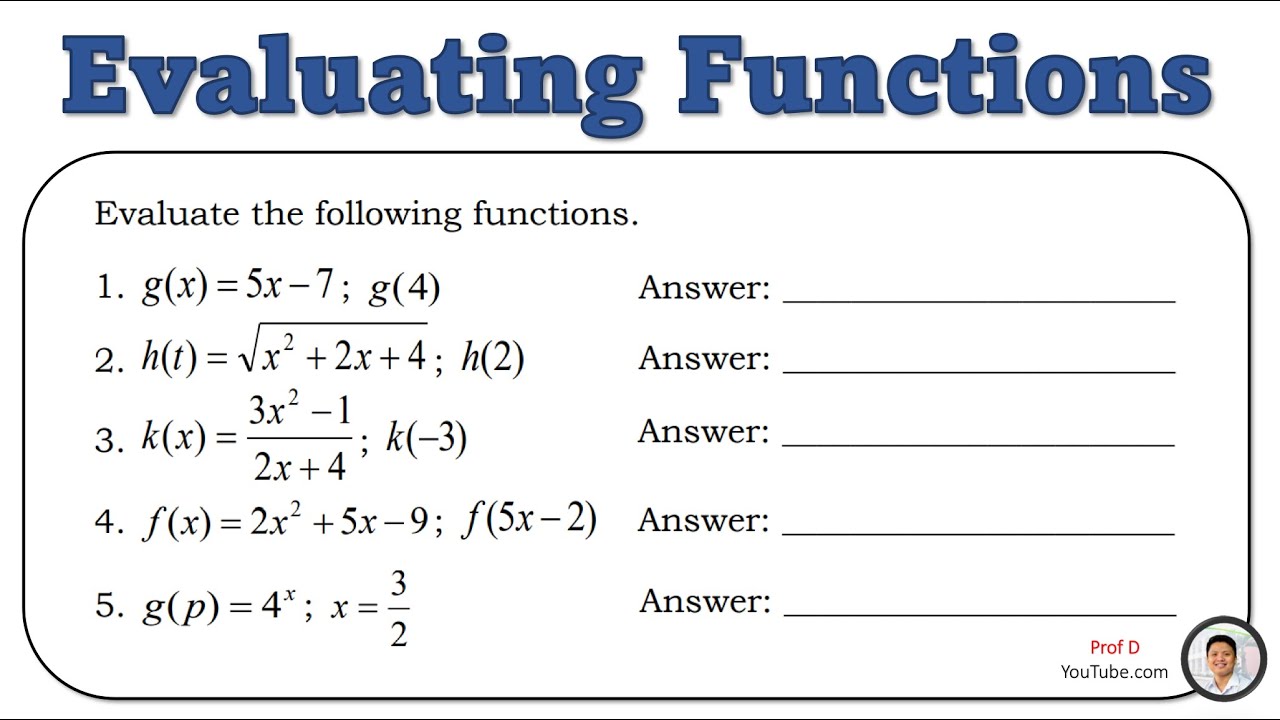Integral de una división de polinomios (paso a paso)
Summary
TLDRIn this tutorial video, the process of calculating the integral of a rational function is explained step-by-step. The video demonstrates how to divide polynomials, using the division of `x^2 + 8x - 7` by `x - 3`, resulting in a simplified expression of `x + 11 + 26/(x - 3)`. The integral is then broken into three simpler parts: ∫x dx, ∫11 dx, and ∫(26/(x - 3)) dx, which are solved to give the final result: (x^2)/2 + 11x + 26ln|x - 3| + C. The video encourages viewers to like, subscribe, and engage with questions or comments.
Takeaways
- 😀 The video teaches how to calculate the integral of a polynomial expression divided by another polynomial, specifically 'x^3 + 8x - 7' divided by 'x - 3'.
- 😀 The process starts with polynomial division since the degree of the numerator is higher than that of the denominator.
- 😀 The degree of a polynomial is determined by the highest exponent of the variable, and in this case, the numerator's degree is 3, while the denominator's degree is 1.
- 😀 To perform the division, the first term of the numerator is divided by the first term of the denominator, resulting in the term 'x'.
- 😀 After dividing, the result is multiplied by the denominator, and the sign is changed to subtract it from the original expression.
- 😀 The process is repeated by dividing the next term of the remainder by the denominator, continuing the division until no further terms can be divided.
- 😀 The division results in 'x + 11', with a remainder of '26/(x - 3)', which must be included in the final result of the division.
- 😀 The integral is simplified into three parts: the integral of 'x', the integral of '11', and the integral of '26/(x - 3)'.
- 😀 Constants multiplying the integrals (like 11 and 26) are factored out to simplify the calculations.
- 😀 The final integrals are solved using standard integration rules: the integral of 'x' results in 'x^2/2', the integral of '11' gives '11x', and the integral of '26/(x - 3)' gives '26 * ln|x - 3|'.
- 😀 The constant of integration is added at the end, and the result is finalized as 'x^2/2 + 11x + 26 * ln|x - 3| + C'.
Q & A
What is the integral that needs to be calculated in the video?
-The integral that needs to be calculated is: ∫ (x^3 + 8x - 7) / (x - 3) dx.
Why is polynomial division necessary in this problem?
-Polynomial division is necessary because the degree of the numerator (x^3 + 8x - 7) is higher than that of the denominator (x - 3), requiring division to simplify the expression.
How do you determine the degree of a polynomial?
-The degree of a polynomial is determined by the highest exponent of the variable in the polynomial. For example, in the polynomial x^3 + 8x - 7, the degree is 3 because the highest exponent is 3.
What is the result of the polynomial division in this example?
-The result of the polynomial division is: x^2 + 11 + 26 / (x - 3).
What is the next step after performing polynomial division?
-After performing polynomial division, the integral is rewritten as the sum of simpler integrals: ∫ (x^2 + 11 + 26 / (x - 3)) dx.
How do you separate the integrals after rewriting the expression?
-The expression is separated into three simpler integrals: ∫ x^2 dx, ∫ 11 dx, and ∫ 26 / (x - 3) dx.
What is the result of the integral ∫ x^2 dx?
-The result of the integral ∫ x^2 dx is (x^3 / 3).
What happens when you integrate a constant like 11 with respect to x?
-When you integrate a constant like 11 with respect to x, the result is simply the constant multiplied by x. In this case, ∫ 11 dx = 11x.
How do you integrate the expression ∫ 26 / (x - 3) dx?
-The integral ∫ 26 / (x - 3) dx is a standard logarithmic integral, and the result is 26 ln |x - 3|.
What is the final result of the integral calculation?
-The final result of the integral calculation is: (x^3 / 3) + 11x + 26 ln |x - 3| + C, where C is the constant of integration.
Outlines

This section is available to paid users only. Please upgrade to access this part.
Upgrade NowMindmap

This section is available to paid users only. Please upgrade to access this part.
Upgrade NowKeywords

This section is available to paid users only. Please upgrade to access this part.
Upgrade NowHighlights

This section is available to paid users only. Please upgrade to access this part.
Upgrade NowTranscripts

This section is available to paid users only. Please upgrade to access this part.
Upgrade NowBrowse More Related Video

Relasi dan Fungsi Matematika Kelas 10 • Part 24: Fungsi Rasional Bentuk 2 - Linear / Kuadrat

Grade 11 | Evaluating Functions | General Mathematics

🟦 Máximos y Mínimos de una Función (Criterio de la Primer Derivada) | Video 3

Teorema Stokes1

Numerical Integration With Trapezoidal and Simpson's Rule

Menghitung Bobot Dokumen Menggunakan TF-IDF dan VSM dengan Bahasa Pemrograman Python | PART 2
5.0 / 5 (0 votes)